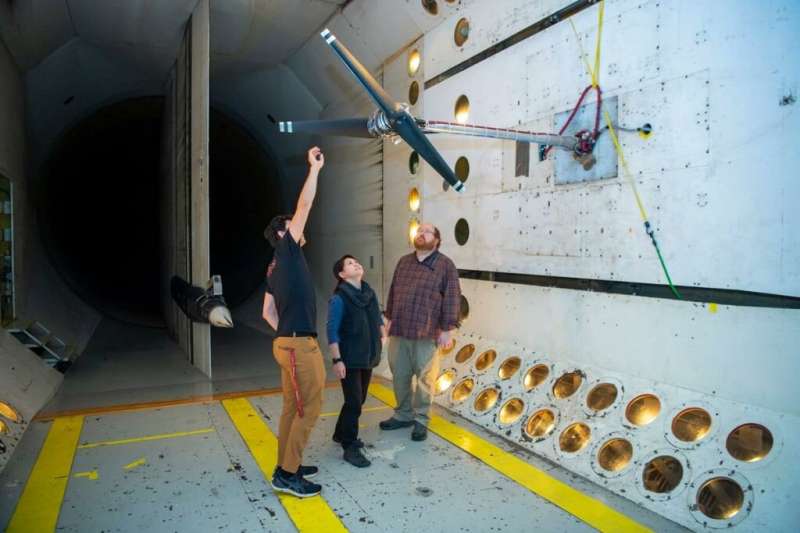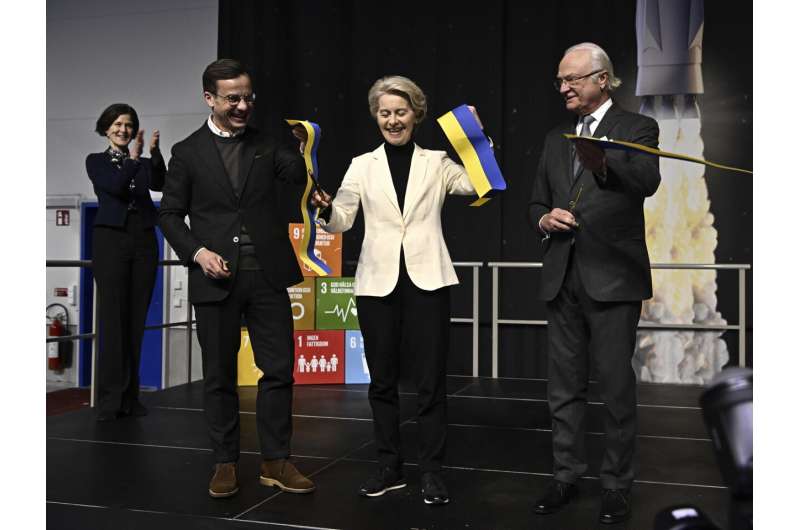
Copernical Team
Vulcan rocket one step closer to launch
 The United Launch Alliance (ULA) Vulcan Centaur rocket has begun its journey to the launch site in preparation for the first test flight. The certification flight one (Cert-1) rocket was completed, loaded onto the R/S RocketShip outside of ULA's rocket factory in Decatur, Ala. and is on a 2,000-mile voyage to Cape Canaveral Space Force Station in Florida.
"The first Vulcan is complete, and
The United Launch Alliance (ULA) Vulcan Centaur rocket has begun its journey to the launch site in preparation for the first test flight. The certification flight one (Cert-1) rocket was completed, loaded onto the R/S RocketShip outside of ULA's rocket factory in Decatur, Ala. and is on a 2,000-mile voyage to Cape Canaveral Space Force Station in Florida.
"The first Vulcan is complete, and US, Japan sign Space Collaboration Agreement at NASA Headquarters
 During an event hosted by NASA Administrator Bill Nelson and Deputy Administrator Pam Melroy at the agency's Headquarters in Washington Friday, representatives from the United States and Japan gathered to sign an agreement that builds on a long history of collaboration in space exploration between the two nations.
U.S. Secretary of State Antony J. Blinken and Japan's Minister for Foreign A
During an event hosted by NASA Administrator Bill Nelson and Deputy Administrator Pam Melroy at the agency's Headquarters in Washington Friday, representatives from the United States and Japan gathered to sign an agreement that builds on a long history of collaboration in space exploration between the two nations.
U.S. Secretary of State Antony J. Blinken and Japan's Minister for Foreign A World View to go public via SPAC Deal with Leo Holdings
 World View and Leo Holdings Corp. II (NYSE: LHC), a publicly-traded special purpose acquisition company, have entered into a definitive business combination agreement that will result in World View becoming a publicly listed company. The transaction values the combined company at an estimated enterprise value of $350 million. Upon closing of the transaction, the combined company will continue op
World View and Leo Holdings Corp. II (NYSE: LHC), a publicly-traded special purpose acquisition company, have entered into a definitive business combination agreement that will result in World View becoming a publicly listed company. The transaction values the combined company at an estimated enterprise value of $350 million. Upon closing of the transaction, the combined company will continue op NASA is continuing to build the Titan Dragonfly helicopter, with a focus on its rotors

Ingenuity, the helicopter assisting NASA's Mars Perseverance rover on its mission, has been a huge success. It gathered the achievement of the first controlled flight on another heavenly body, has performed spectacularly over its 28 flights and holds records for both speed and distance. But it might not for long, as a much bigger, more capable helicopter is currently under development. And when it eventually explores Titan in the next decade, it has an excellent chance to smash many of Ingenuity's records.
That helicopter, known as Dragonfly, is currently still in development on Earth. But, it achieved a significant milestone recently by completing the testing of its rotor blades at a unique testing chamber located at NASA's Langley Research Center.
The Transonic Dynamics Tunnel (TDT) differs from a standard wind tunnel in several ways. Most helpful in this case is its ability to use gases other than just Earth-normal air.
NASA's Lunar Flashlight team assessing spacecraft's propulsion system

NASA's Lunar Flashlight mission successfully launched on Dec. 11, 2022, to begin its four-month journey to the moon, where the small satellite, or SmallSat, will test several new technologies with a goal of looking for hidden surface ice at the lunar South Pole. The mission is characterizing its new "green" propulsion system and developing a modified plan for the briefcase-size satellite's journey to the moon.
While the SmallSat is largely healthy and communicating with NASA's Deep Space Network, the mission operations team has discovered that three of its four thrusters are underperforming.
EU inaugurates first mainland satellite launch port

Week in images: 09-13 January 2023

Week in images: 09-13 January 2023
Discover our week through the lens
Ingenuity completes the A-Z tour of the Wright Brothers Field at Jezero Crater
 NASA's Ingenuity Mars Helicopter has acquired a new image using its high-resolution color camera. The camera, which is mounted in the helicopter's fuselage and pointed approximately 22 degrees below the horizon, was used during the 38th flight of the Ingenuity on January 11, 2023 (Sol 667 of the Perseverance rover mission).
During the flight, the Ingenuity traveled a horizontal distance of
NASA's Ingenuity Mars Helicopter has acquired a new image using its high-resolution color camera. The camera, which is mounted in the helicopter's fuselage and pointed approximately 22 degrees below the horizon, was used during the 38th flight of the Ingenuity on January 11, 2023 (Sol 667 of the Perseverance rover mission).
During the flight, the Ingenuity traveled a horizontal distance of Model-Independent Method to weigh protoplanetary disks
 Astronomers have found a way to directly measure the amount of gas in protoplanetary disks without needing to make assumptions about the relative amounts of different types of gas, making this method more accurate and robust than previous methods.
Planets form in protoplanetary disks of gas and dust around young stars. Scientists study protoplanetary disks by looking at their spectra, the
Astronomers have found a way to directly measure the amount of gas in protoplanetary disks without needing to make assumptions about the relative amounts of different types of gas, making this method more accurate and robust than previous methods.
Planets form in protoplanetary disks of gas and dust around young stars. Scientists study protoplanetary disks by looking at their spectra, the TESS discovers planetary system's second Earth-size world
 Using data from NASA's Transiting Exoplanet Survey Satellite, scientists have identified an Earth-size world, called TOI 700 e, orbiting within the habitable zone of its star - the range of distances where liquid water could occur on a planet's surface. The world is 95% Earth's size and likely rocky.
Astronomers previously discovered three planets in this system, called TOI 700 b, c, and d
Using data from NASA's Transiting Exoplanet Survey Satellite, scientists have identified an Earth-size world, called TOI 700 e, orbiting within the habitable zone of its star - the range of distances where liquid water could occur on a planet's surface. The world is 95% Earth's size and likely rocky.
Astronomers previously discovered three planets in this system, called TOI 700 b, c, and d 
